Soviet HI-FI and its creators: passions according to Hale - Electronics 150АС - 001
In this post we will talk about the acoustic system, created in the depths of the Leningrad VNIIRPA in the late 80s and produced in small batches at the Ferropribor plant. The fate of this Soviet development, in spite of its significance and revolutionism for the domestic electroacoustics, was not the best. The serial production of St. Petersburg columns left an imprint of the era in which they went into the series, namely, the year 1991. As I do not get tired of repeating, history does not recognize the subjunctive mood, but, probably, if it were not for the collapse of the Soviet system, then this acoustics would have surpassed the various S-90 and Klivers in popularity.
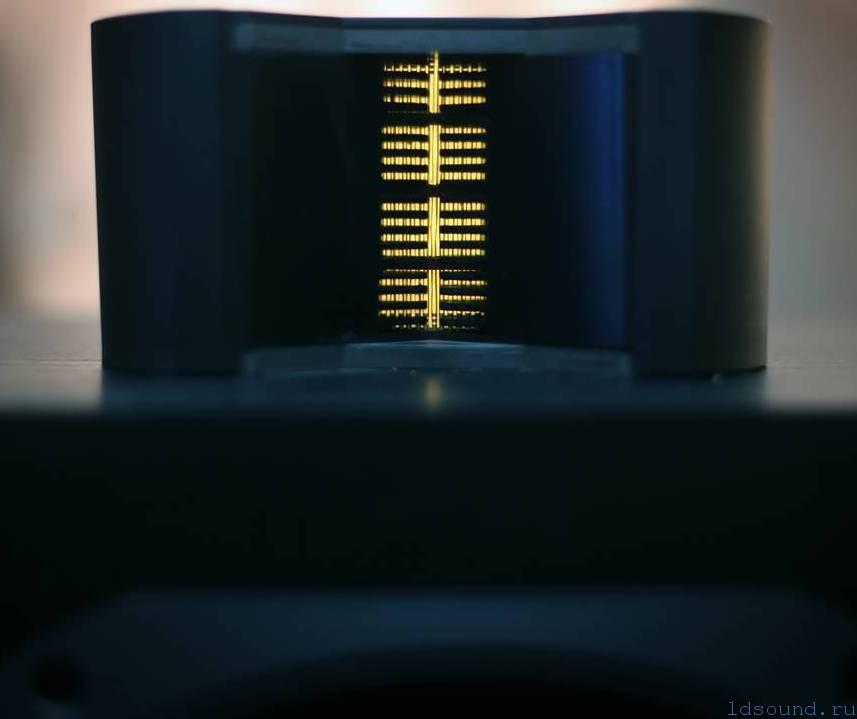
This development attracted my attention for several reasons: high-quality processing of the American prototype (nothing was copied except for the concept), the use of a Hale radiator with a wide frequency range as a MF-HF link, the use of a “closed box” with a passive radiator for implementing the low-frequency section, impressive specifications.
As I noted earlier, in the late 80s, the activity of “industrial espionage” of consumer goods intensified. In other words, because of the rotting iron curtain, Soviet officials from technical departments as samples for studying and copying dragged more and more usable equipment. At the same time, the taste of the spy-bureaucrats was quite decent, so in 1987, the legend of the American column engineering, ESS AMT 1, arrived in VNIIRPA.
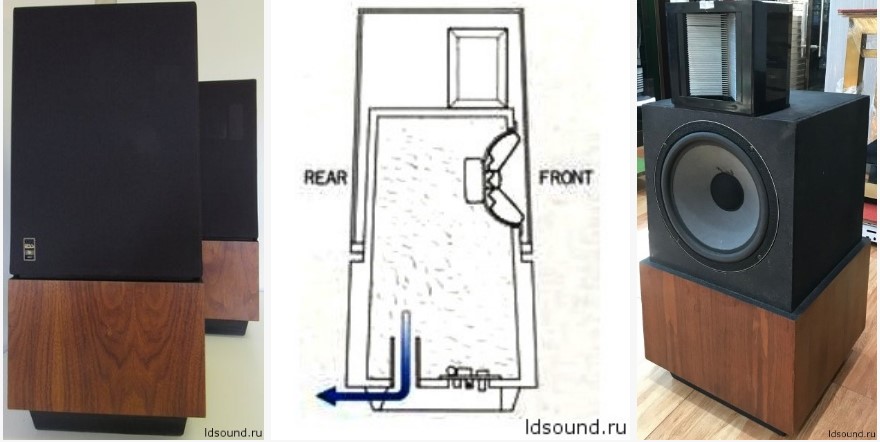
ESS AMT 1
A characteristic feature of the brought sample is a powerful low-frequency section and a futuristic, large Hale emitter as a source of mid and high frequencies. Interestingly, in the US, ESS AMT 1 has been produced since 1973. Moreover, it was considered a true audiophile legend, possessing characteristics that are difficult to achieve not only in the 70s, but also in the 80s of the last century:
By destination, i.e. In VNIIRPA, the American wonder-acoustics falls only in 1989 (judging by the information of one of the developers sounded on the forum rt20.mybb2.ru ).
A cursory study of the American sample shows that it is in some respects inferior to the analogous acoustics already developed at VNIIRPA since 1987. The design of the experimental speaker is also based on the combination of the LF section with the Hale emitter, but unlike the American model, the LF section is designed as a closed box with a passive radiator.
According to a number of data, a detailed comparison of measurements in the anechoic chamber of the Soviet prototype and the American serial acoustics suggests that it makes no sense to copy it cleanly. The decision is made to preserve its own design and borrow only some of the design features of the Hale emitter and the filter circuitry from the “American”.
In fairness, it should be noted that the starting point for the new Soviet AU was also ESS AMT 1. It was with the interest of Soviet engineers to this product of “enemy” electroacoustics that the epic began with the development of the AU based on Hale and precisely for this reason in 1987 year as a sample brought to the USSR.
We can say that the development of such acoustics in this difficult time for the Soviet instrument-making time is already a kind of feat. Prototyping of the new model was completed in 1989.
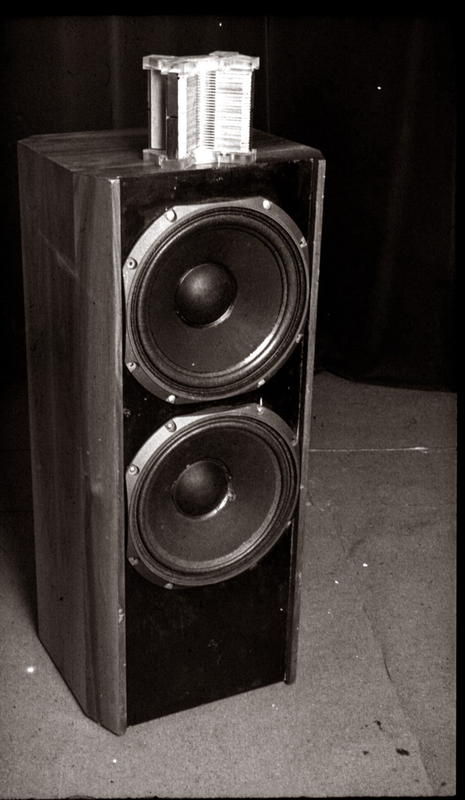
Initially 2 samples were tested, namely 150 AC AT-001 (100 liters) and 150 AC AT-002 (70 liters). In the second alternative, the passive radiator was located on the rear wall of the housing. For a number of obvious shortcomings, the compromise 70-liter version was not launched into the series. I was not able to see control measurements, but it is obvious that the casing of the LF section with a smaller volume was worse.
The prototype of the main version (001) turned out to be surprisingly successful, which promised a successful future for the new speakers. The main innovations of the development concerned the emitter Hale. The membrane of the Soviet speakers was made of polyamide, which is still the main material for the creation of tape and electrostatic emitters due to its unique thermodynamic properties. The thickness of the membrane was 14 microns.
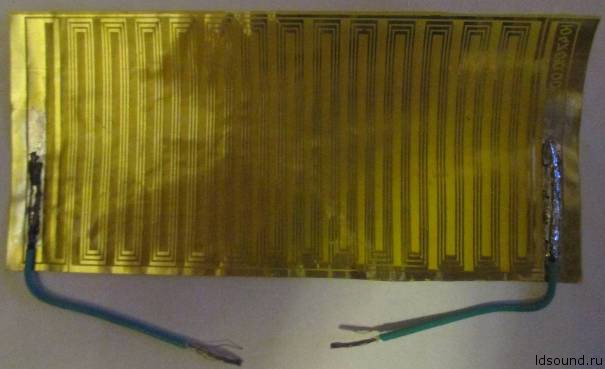
An original feature of the design of the tape driver was the use of the so-called. "Crossbars" to which edges of folds of a membrane fastened. Thus, the edges of the “accordion” bends remained static, and the movement of the membrane took place in the depth of the folds, which allowed maintaining a stable shape and eliminating harmful resonant vibrations without detriment to radiation.

The use of this innovation allowed us to obtain a smoother frequency response and a small number of resonances in the audible spectrum, compared to the American source.
The use of a closed box in the low-frequency section also significantly reduced the body resonances and nonlinear distortions, and also significantly affected the subjective parameters of fidelity playback. In general, the characteristics of the late prototypes were as follows:
About the circuit design and filter design can be judged by the following materials:
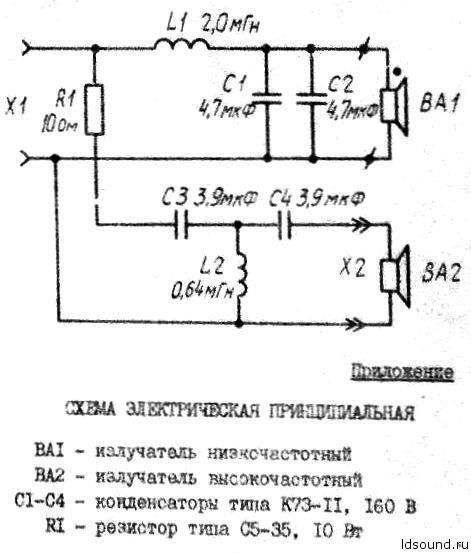

The prototype speaker was superior to the American model, both in power and in the level of distortion. Also, the new Soviet AU had a more uniform frequency response, which could not fail to please the developers.
However, the prototype often has differences from the serial sample. Mass adaptation often involves the use of not those technological methods that are used in laboratories and when creating prototypes, which inevitably leads to degradation of characteristics.

Preparation for serial production of 150AS-001 was carried out at the Ferropribor plant. The start of production was planned in 1990. Opinions differ regarding the start of production, some former employees of the ferropribor claim that this was the case, others write that the first series was released only in 1991. The reference material is the year 1991.

The technology of creating the emitter Hale at the plant was slightly modified, which resulted in a change in the characteristics significant for sound, which in production samples were noticeably inferior to the prototype (data from ldsound.ru):
As the economic situation of the enterprise deteriorated, another 2 variants of the AU were released, the task of each of the upgrades was to simplify and reduce the cost of construction. Despite the fact that the passport data acoustics did not change, many people familiar with the development and production, argue that the later series was inferior to the first one many times, both in terms of distortion and uniformity of frequency response, and in the quality of filters.
The differences of the series mainly consisted in the design features of Hale emitters, its dimensions and frequency characteristics and woofers. There is information about the so-called. “Double Haley”, apparently - this is Twitter Electronics 150 AC-001 early series before upgrading, and about “one and a half” and “single” later, cheaper editions of the AU. Below are the differences in the frequency response of the “double” (red) and “one and a half” (blue) drivers:

More detailed measurements of the emitters Electronics 150AC-001 can be found here .
In the so-called the third version of Electronics 150 AC-001, according to one of the developers, used other low-frequency drivers.
It is also known that at the end of 1991, the developers of Electronics 150AS-001 from VNIIRPA visited the factory to evaluate the serial version of the AS. It was even organized a comparative audition of a prototype from the Research Institute and the serial version of the acoustics. According to the results of the audition, the developers recognized the sounding of the factory version as unsatisfactory, as a corresponding report was drawn up.
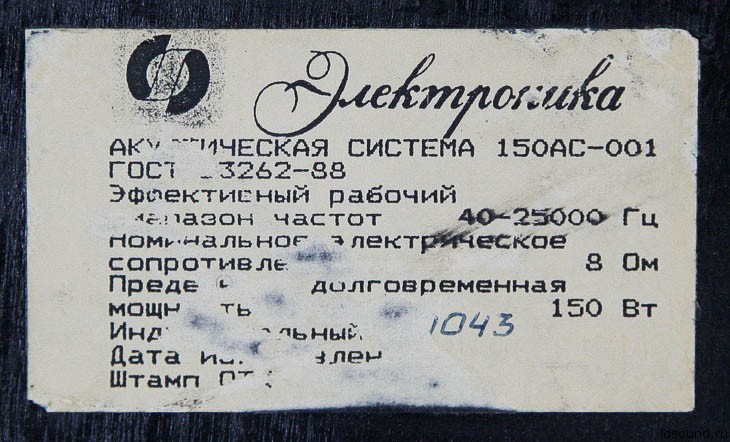
It is known that the release of "streamlined" versions of the AU continued. Probably, this happened due to the fact that, despite the deterioration of the objective characteristics, it surpassed almost all the power analogues produced at that time in the country.
The history of the development of this AU demonstrates that the creation of Soviet technology was not always used blind copying of Western samples. It becomes clear that the independent development of Soviet engineers sometimes exceeded foreign analogues. In addition, illustrates the so-called. “Draconian rationalization”, which rarely harmed the quality of products for the sake of manufacturability, cost reduction and increase in production speed.
Photo used: ldsound.ru
Jeans
in our catalog a wide range of acoustic systems of high fidelity, among others, present speakers with emitters Hale .

This development attracted my attention for several reasons: high-quality processing of the American prototype (nothing was copied except for the concept), the use of a Hale radiator with a wide frequency range as a MF-HF link, the use of a “closed box” with a passive radiator for implementing the low-frequency section, impressive specifications.
Create cannot be cloned
As I noted earlier, in the late 80s, the activity of “industrial espionage” of consumer goods intensified. In other words, because of the rotting iron curtain, Soviet officials from technical departments as samples for studying and copying dragged more and more usable equipment. At the same time, the taste of the spy-bureaucrats was quite decent, so in 1987, the legend of the American column engineering, ESS AMT 1, arrived in VNIIRPA.

ESS AMT 1
A characteristic feature of the brought sample is a powerful low-frequency section and a futuristic, large Hale emitter as a source of mid and high frequencies. Interestingly, in the US, ESS AMT 1 has been produced since 1973. Moreover, it was considered a true audiophile legend, possessing characteristics that are difficult to achieve not only in the 70s, but also in the 80s of the last century:
- Frequency range: 45 Hz - 24000 Hz (with uneven frequency response ± 2 dB)
- THD (at SPL 90 dB):
- 600 Hz: 0.5%
- 60 Hz: 1%
- Resistance: 4 Ohms
- Rated power: 120 W
- LF: 250 mm, tapered (corn paper)
- HF: Hale radiator (electrostatic type)
- Filter section frequency: 600 Hz
- Dimensions (HxWxD): 787x362x362 mm
By destination, i.e. In VNIIRPA, the American wonder-acoustics falls only in 1989 (judging by the information of one of the developers sounded on the forum rt20.mybb2.ru ).
A cursory study of the American sample shows that it is in some respects inferior to the analogous acoustics already developed at VNIIRPA since 1987. The design of the experimental speaker is also based on the combination of the LF section with the Hale emitter, but unlike the American model, the LF section is designed as a closed box with a passive radiator.
According to a number of data, a detailed comparison of measurements in the anechoic chamber of the Soviet prototype and the American serial acoustics suggests that it makes no sense to copy it cleanly. The decision is made to preserve its own design and borrow only some of the design features of the Hale emitter and the filter circuitry from the “American”.
In fairness, it should be noted that the starting point for the new Soviet AU was also ESS AMT 1. It was with the interest of Soviet engineers to this product of “enemy” electroacoustics that the epic began with the development of the AU based on Hale and precisely for this reason in 1987 year as a sample brought to the USSR.
High fidelity prototype
We can say that the development of such acoustics in this difficult time for the Soviet instrument-making time is already a kind of feat. Prototyping of the new model was completed in 1989.

Initially 2 samples were tested, namely 150 AC AT-001 (100 liters) and 150 AC AT-002 (70 liters). In the second alternative, the passive radiator was located on the rear wall of the housing. For a number of obvious shortcomings, the compromise 70-liter version was not launched into the series. I was not able to see control measurements, but it is obvious that the casing of the LF section with a smaller volume was worse.
The prototype of the main version (001) turned out to be surprisingly successful, which promised a successful future for the new speakers. The main innovations of the development concerned the emitter Hale. The membrane of the Soviet speakers was made of polyamide, which is still the main material for the creation of tape and electrostatic emitters due to its unique thermodynamic properties. The thickness of the membrane was 14 microns.

An original feature of the design of the tape driver was the use of the so-called. "Crossbars" to which edges of folds of a membrane fastened. Thus, the edges of the “accordion” bends remained static, and the movement of the membrane took place in the depth of the folds, which allowed maintaining a stable shape and eliminating harmful resonant vibrations without detriment to radiation.

The use of this innovation allowed us to obtain a smoother frequency response and a small number of resonances in the audible spectrum, compared to the American source.
The use of a closed box in the low-frequency section also significantly reduced the body resonances and nonlinear distortions, and also significantly affected the subjective parameters of fidelity playback. In general, the characteristics of the late prototypes were as follows:
- Frequency range: 40 - 25000 Hz with uneven frequency response in the frequency range 100-8000 Hz: ± 1.5 dB
- Sensitivity: 91 dB (0.71 Pa / √W)
- SOI with sound pressure level of 90 dB:
- 250 - 1000 Hz: 1.2%
- 1000 - 2000 Hz: 0.9%
- 2000 - 8000 Hz: 0.6%
- Hale emitter impedance: 11 ohm
- Bass section resistance: 8 ohm
- Impedance Min: 6.4 ohm
- Long-term power: 150 W
About the circuit design and filter design can be judged by the following materials:


The prototype speaker was superior to the American model, both in power and in the level of distortion. Also, the new Soviet AU had a more uniform frequency response, which could not fail to please the developers.
Serial problems
However, the prototype often has differences from the serial sample. Mass adaptation often involves the use of not those technological methods that are used in laboratories and when creating prototypes, which inevitably leads to degradation of characteristics.

Preparation for serial production of 150AS-001 was carried out at the Ferropribor plant. The start of production was planned in 1990. Opinions differ regarding the start of production, some former employees of the ferropribor claim that this was the case, others write that the first series was released only in 1991. The reference material is the year 1991.

The technology of creating the emitter Hale at the plant was slightly modified, which resulted in a change in the characteristics significant for sound, which in production samples were noticeably inferior to the prototype (data from ldsound.ru):
- Frequency range: 40 (-3 dB) - 25000 Hz
- Sensitivity: 91 dB (0.71 Pa / √W)
- Irregularity of frequency response in the frequency range of 100-8000 Hz: ± 4 dB
- Harmonic distortion at a sound pressure level of 90 dB in the frequency range:
- 250 - 1000 Hz: 2%
- 1000 - 2000 Hz: 1.5%
- 2000 - 8000 Hz: 1%
- Resistance: 8 Ohm
- Impedance Min: 6.4 ohm
- Long-term power: 150 W
As the economic situation of the enterprise deteriorated, another 2 variants of the AU were released, the task of each of the upgrades was to simplify and reduce the cost of construction. Despite the fact that the passport data acoustics did not change, many people familiar with the development and production, argue that the later series was inferior to the first one many times, both in terms of distortion and uniformity of frequency response, and in the quality of filters.
The differences of the series mainly consisted in the design features of Hale emitters, its dimensions and frequency characteristics and woofers. There is information about the so-called. “Double Haley”, apparently - this is Twitter Electronics 150 AC-001 early series before upgrading, and about “one and a half” and “single” later, cheaper editions of the AU. Below are the differences in the frequency response of the “double” (red) and “one and a half” (blue) drivers:

More detailed measurements of the emitters Electronics 150AC-001 can be found here .
In the so-called the third version of Electronics 150 AC-001, according to one of the developers, used other low-frequency drivers.
It is also known that at the end of 1991, the developers of Electronics 150AS-001 from VNIIRPA visited the factory to evaluate the serial version of the AS. It was even organized a comparative audition of a prototype from the Research Institute and the serial version of the acoustics. According to the results of the audition, the developers recognized the sounding of the factory version as unsatisfactory, as a corresponding report was drawn up.

It is known that the release of "streamlined" versions of the AU continued. Probably, this happened due to the fact that, despite the deterioration of the objective characteristics, it surpassed almost all the power analogues produced at that time in the country.
Total
The history of the development of this AU demonstrates that the creation of Soviet technology was not always used blind copying of Western samples. It becomes clear that the independent development of Soviet engineers sometimes exceeded foreign analogues. In addition, illustrates the so-called. “Draconian rationalization”, which rarely harmed the quality of products for the sake of manufacturability, cost reduction and increase in production speed.
Photo used: ldsound.ru
Jeans
in our catalog a wide range of acoustic systems of high fidelity, among others, present speakers with emitters Hale .
